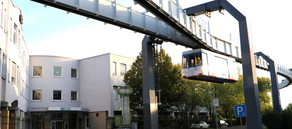Educational choices and educational pathways within the context of structural changes in Berlin’s secondary school system
The BERLIN Study is the accompanying scientific investigation of the BERLIN structural secondary school reform.
Beginning with the school year 2010/11, the state of Berlin carried out a comprehensive school structural reform. In this context, the formerly existing school types of Hauptschule, Realschule and Gesamtschule were merged into a newly introduced integrated secondary school (ISS). All school leaving certificates, including Abitur (higher education qualification) can be acquired at the ISS. Furthermore, ISS is organized on a compulsory all-day school basis and is strongly oriented towards vocational learning and orientation. Moreover, the repetition of a school year was abolished at the ISS.

The main objectives of the structural reform were to increase the percentage of school leavers with a medium or higher level of qualification, to reduce the percentage of school leavers without a degree and the weakening of the relation between students’ family background and their educational outcomes. As an additional feature of the reform, the transition from primary to secondary school was modified. The most important change concerns enrolment procedures at the secondary schools. If demand exceeds a school’s capacities, up to 10 percent of the placements are allocated to students with special family or social backgrounds (“hardship cases”). The school selects 60 percent of the candidates itself, for instance on the basis of grades or tests. The remaining 30 percent of placements are drawn by lot. On the one hand, these new regulations are meant to contribute to a stronger differentiation of school profiles, while on the other hand, the chance allocation by lot is to guarantee a minimum degree of heterogeneity in the student body.
The BERLIN study assesses effects of the BERLIN structural secondary school reform on learning outcomes and educational pathways of students. To this end, the BERLIN study examines students from the first cohort of primary school students passing through the new transition procedure to the two-track secondary school system (Gymnasium and ISS) which is the second cohort of students attending the new two-track system.. Students are monitored from the end of their primary school education (grade 6) until transition to upper secondary education respectively entry into vocational education. A quasi-experimental study design was chosen comprising two stages: stage I focuses on the transition from primary education to lower secondary education. Stage II focuses on educational outcomes reached at the end of lower secondary education, as well as on the transition to vocational education or to the academic educational track (upper secondary education). In both stages, the study design targets an experimental and a control group. At the end of lower secondary education, both experimental groups are interlinked.
External project partners
- Prof. Dr. Jürgen Baumert, Max-Planck-Institut für Bildungsforschung (MPIB Berlin)
- Prof. Dr. Olaf Köller, Leibniz-Institut für die Pädagogik der Naturwissenschaften und Mathematik (IPN, Kiel)
- Prof. Dr. Kai Maaz und Dr. Marko Neumann, DIPF | Leibniz-Institut für Bildungsforschung und Bildungsinformation, Frankfurt a. M./Berlin






![[Translate to English:] [Translate to English:]](/storages/ifs-ep/_processed_/8/5/csm_AdobeStock_412860748_9a2dbb816c.jpeg)
